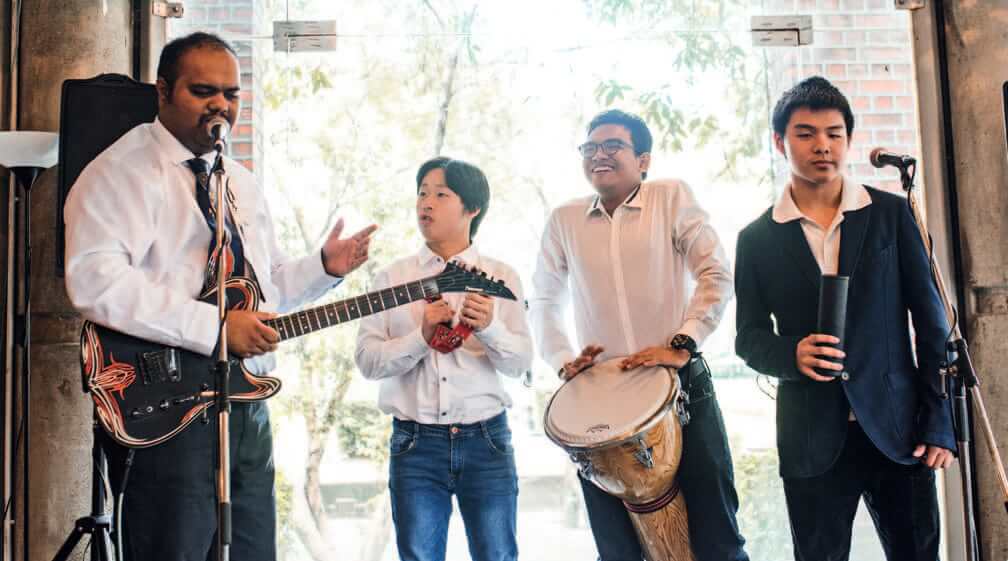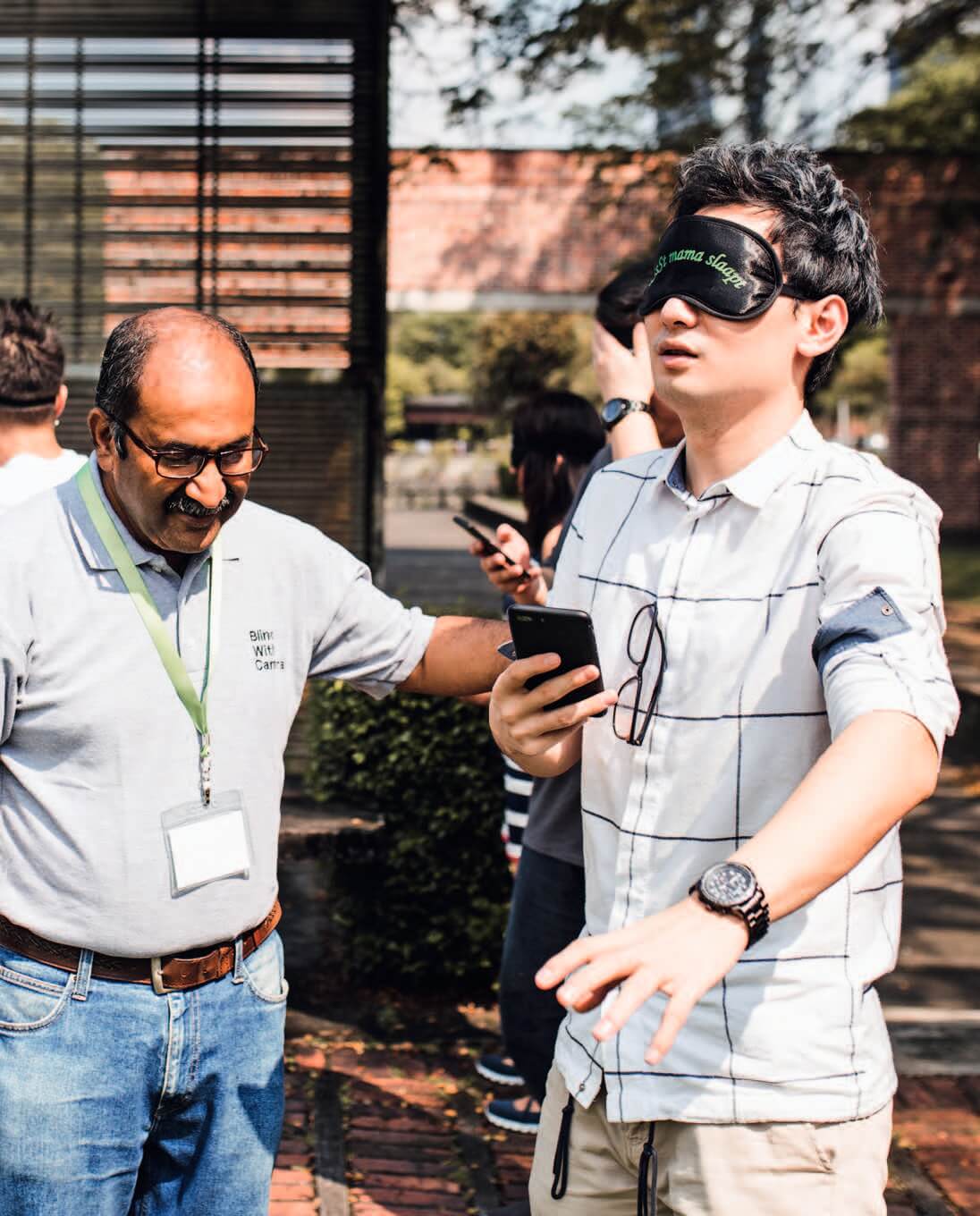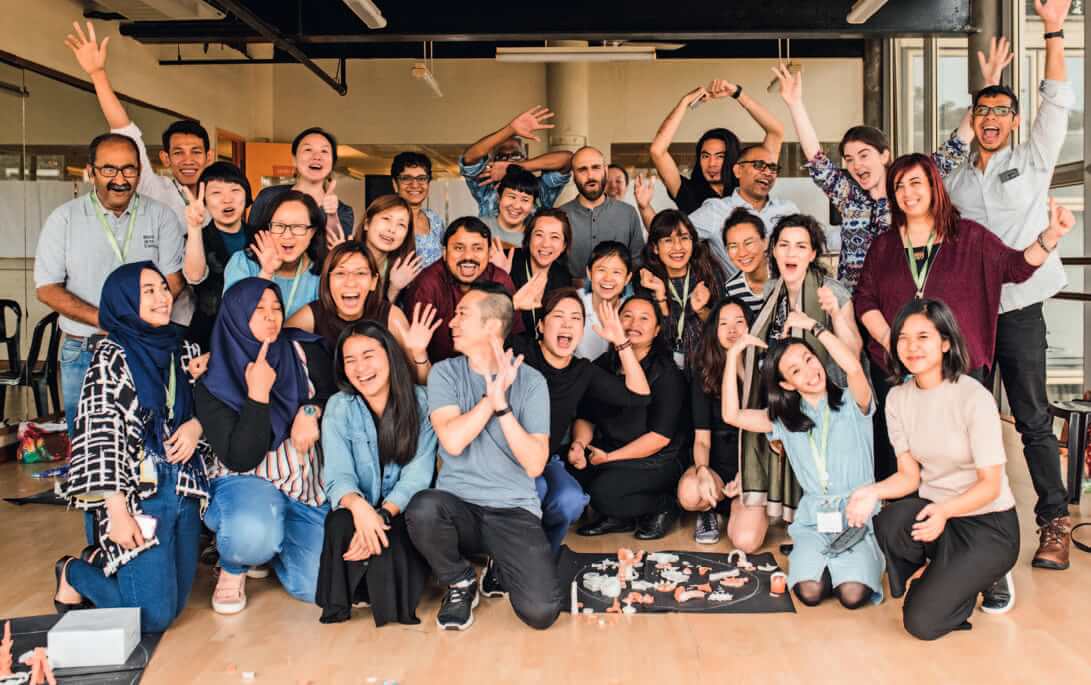Stories > He(art) of the Matter
He(art) of the Matter
This year’s Arts for Good Fellowship puts the spotlight on arts and disability, paving the way for much introspection among the participants.
BY YONG SHU CHIANG
PHOTOS SIF
n a world that is increasingly threatened by growing nationalism, it is imperative for artists to play the role of peacemakers, connectors and negotiators.” That is how Siram Venkatanarayanan sums up the Singapore International Foundation (SIF)’s newly launched Arts for Good Fellowship.
The founder and director of NalandaWay Foundation, an India-based organisation that uses visual and performing arts to help children from disadvantaged communities, joined the programme with the hope of connecting with like-minded individuals working on arts and social change. He soon found himself being introduced to a global community of theatre practitioners, art therapists, musicians, event producers and educators.
Indeed, that is the overarching aim of the fellowship – to bring together artists, arts administrators and social sector professionals, and help them develop new capabilities for the creation of socially impactful and sustainable arts programmes.
Underlying its raison d’etre is the belief that arts has the power to transcend barriers and effect positive social change. With fellows hailing from diverse nationalities and backgrounds, the potential to make a broader impact across borders and sectors is significant.
Upon completion of the fellowship, participants join a global network where they can continue to work with one another.

A performance by musicians with autism during the exchange programme in Kuala Lumpur.
A LEG UP
With several fellows having considerable experience in using art for social good, what drew them to the inaugural fellowship was the common goal of helping to create a more inclusive society, not to mention the opportunity to network and build on their skills through exchange programmes in Kuala Lumpur and Singapore.
“The fellowship’s focus on arts and disability resonated with me, as I have been working with children and teenagers with disabilities since 2006. More importantly, it offered me the chance to study community work and practices in an international context,” shares Michael Cheng, an applied drama practitioner from Singapore.
Through exposure to seasoned practitioners from a variety of sectors, the fellows discovered new ways of meeting their organisations’ needs. “I found the lessons by [funding agency] Malaysian Simplygiving on how to apply crowdfunding models to arts projects particularly useful,” says To Loeurt, a programme manager who works with the Cambodian non-profit association Phare Ponleu Selpak to uplift the lives of children, young adults and their families through art schools, educational programmes and social support. “We are currently collaborating to help my organisation raise funds,” he added.
“Meeting These Overseas Participants, Who Are Invested In Their Communities For The Long Run, Has Made Me Re-evaluate My Practice Of Transforming Spaces For Arts Events With Short-term Funding Or Cycles.”
Joseph Nair, Visual Artist
NEW POINTS OF VIEW
Then there are those who were challenged to rethink their approaches to art. “One of the participants shared with me that all he needs to run theatre programmes in rural India is a field. Another participant explained how he empowers communities through simple painting exercises,” says Singaporean photographer and visual artist Joseph Nair.
“Meeting these overseas participants, who are invested in their communities for the long run, has made me re-evaluate my practice of transforming spaces for art events with short-term funding or cycles. I now want to invest in more sustainable projects focused on small-scale social interaction and repeat encounters with art.”

Partho Bhowmick leading a blind photography workshop.
Another fellow who gained much food for thought is Partho Bhowmick from India, who founded Blind With Camera, an initiative to promote the art of photography to the visually impaired. For him, a key takeaway of the programme was the need for India to shift from the model of charity to one of empowerment. He has since shared his newfound knowledge with his counterparts in India, and hopes to extend his photography workshops to people with other disabilities, as well as those suffering from terminal diseases.
Apart from being armed with theoretical knowledge, the participants were also able to see, first-hand, some successful operational models by organisations in Singapore and Kuala Lumpur.
“I was particularly impressed by how Singapore supports people living with disabilities. The work that inclusive community space Enabling Village does to help people with disabilities gain employment is truly commendable,” says Venkatanarayanan. The fellows also visited Dignity Kitchen –a hawker training school for the disabled and disadvantaged in Singapore – as well as the Spastic Children’s Association of Selangor and Federal Territory in Kuala Lumpur. “It was good to see the association’s facilities and services, learn about their work, and take part in a community drumming session with their students. Watching the joy and pride on their faces was uplifting,” shares Cheng.
Additionally, the fellows had the opportunity to exchange ideas with one another. Venkatanarayanan conducted a workshop on arts in education for his fellow participants, while Bhowmick – inspired by a talk by the Malaysian Association for the Blind – held a one-day photography workshop for the visually impaired in Kuala Lumpur.
So successful was the workshop that it spurred a professional photographer he met to continue running it in his home city. The experience also turned out to be a humbling one for his counterparts.
“Having been a professional photographer since I was 21, I can take pictures under all kinds of physical and mental conditions,” explains Nair. “But doing so blindfolded takes the cake. All my senses as well as visual and mental models of the world had to be re-evaluated.”

The fellows celebrate the end of the successful inaugural fellowship.
COLLABORATION FOR CONTINUATION
With an eye to the future, the fellows have decided to enhance their respective undertakings through partnerships stemming from their new network of contacts.
Bhowmick, for one, hopes to hold an exhibition of photographs taken by the visually impaired from India, Singapore and Malaysia at the Kuala Lumpur International Arts Festival next year – the result of an encounter with one of the festival’s organisers during the programme. In addition, he is preparing to conduct a photo workshop with the visually impaired in Athens this coming November, in collaboration with a fellow participant.
Also planning to hit the festival circuit is Cheng, who will work with some of the artists and art therapists he met during the fellowship, at Singapore’s Silver Arts Festival in September. They will facilitate an art-making project called Jalan Jalan Stories for the elderly.

LEFT TO RIGHT: The fellows visit Dignity Kitchen, a hawker training school for the disabled and disadvantaged in Singapore; a drumming session to demonstrate how music therapy can instil confidence in people with disability.
COLLABORATION FOR CONTINUATION
With an eye to the future, the fellows have decided to enhance their respective undertakings through partnerships stemming from their new network of contacts.
Other participants, like Suha Khufash, the founder-director of Palestine-based Art to Heart, sees value in broadening the scope of her organisation’s work by bringing home some of the initiatives she has encountered.
“I am in discussions with a fellow from India about making an online ‘Drama for Autism’ course he designed available to practitioners in Palestine, the Middle East and North Africa. I am also in touch with Partho to organise a training programme of his initiative ‘Blind with Camera’ in Palestine,” she shares.
